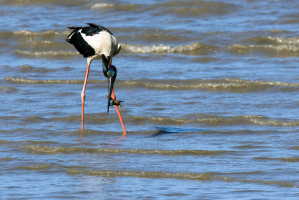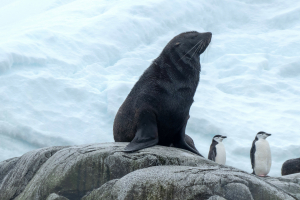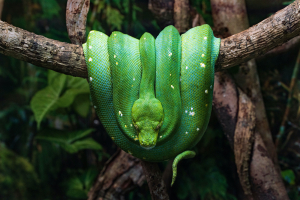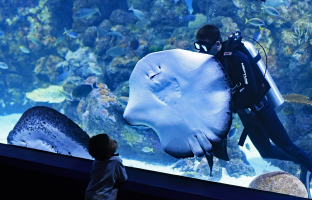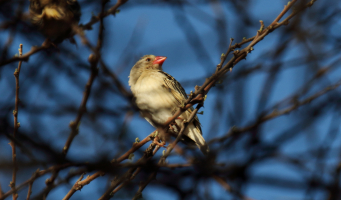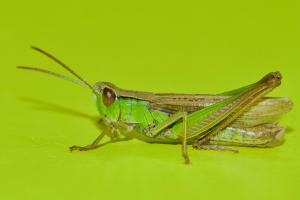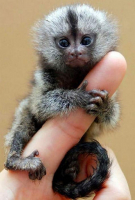Top 6 Animals That Have The Largest Eyes
We all know how important our eyes are: most of our information, experiences, and memories are gathered through our eyes. In the animal kingdom, there are ... read more...amazing eyes. than us. Here is the list of the best animals that have the largest eyes
-
One of the best animals that have the largest eyes is the colossal squid. It can be found in Antarctica's deepest seas. Aside from its eyes, the creature has other distinguishing features, such as being the world's biggest invertebrate. It's even bigger than the largest whale in the animal kingdom. (Fights with the enormous squid have left scars on Sperm whales in the squid's territory.) The enormous squid's eyes are oriented forward to provide optimum distance sighting. They can see food and predators in the dim light of the deep. A soccer ball is roughly the size of each eye.
The ability to see is critical for a giant squid. They utilize their eyes to see and catch prey, as well as to keep an eye out for predators and to communicate with one another. The colossal squid is well equipped for living in the dark depths of the Southern Ocean, with large eyes and built-in lamps. The eyes of the enormous squid are positioned such that they face forward, providing it binocular, or stereoscopic, vision. The enormous squid, on the other hand, has eyes on both sides of its head. It has front and backward eyesight to identify predators but lacks the binocular vision to estimate distances.
Scientific Name: Mesonychoteuthis HamiltoniEye Diameter: About 30 cm
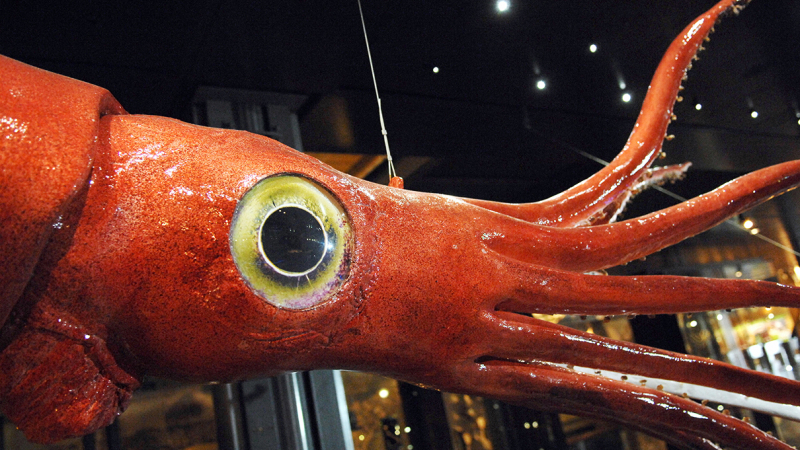
a-z-animals.com 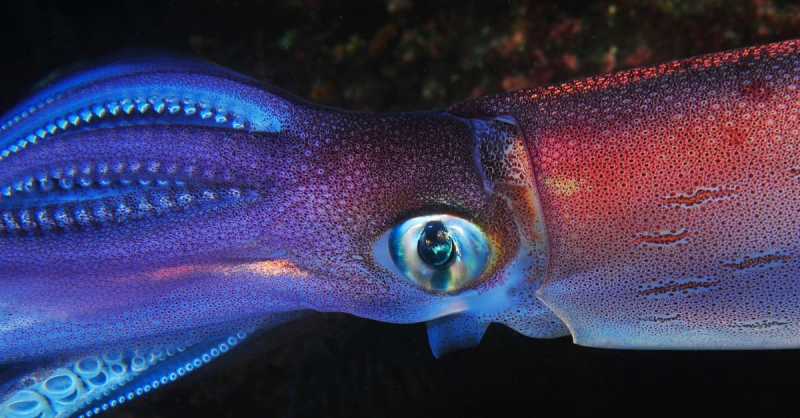
animals.howstuffworks.com -
Chameleons are not only masters of disguise, but they also boast the most vibrant eyes and the best animals that have the largest eyes. Their eyes are made up of many layers of skin. The eye facility, like their capacity to alter skin color, aids them in blending into the surroundings to avoid harm. The eyes of the chameleon can rotate 360 degrees. The animal may also convert from binocular to monocular vision.
For a vertebrate, the angle, or amplitude, of eye movement in chameleons is unusually great, and the eyes move independently of one another. This permits a chameleon to keep an eye on an approaching object while surveying the rest of its surroundings. Chameleon eyes extend laterally from the head, providing panoramic vision to the lizard. The eyes are protected by an eyelid that is united to the pupil, leaving only a little portion visible. Chameleons employ a technique of monocular focusing called corneal adaptation to estimate distance with a negative (nearsighted or concave) lens and a positive (farsighted or convex) cornea. The chameleon eye's unusual structure with isolated nodal and center points of the eye allows each eye to focus independently.
Because most chameleons are nocturnal, they have excellent eyesight to adapt to this lifestyle. Their eyes are 350 times more sensitive than human vision and color thresholds, to be exact. Even in low light, they can see colors vividly. Chameleons can also focus on items quite quickly.
Scientific Name: Chamaeleonidae
Eye Diameter: About 18 cm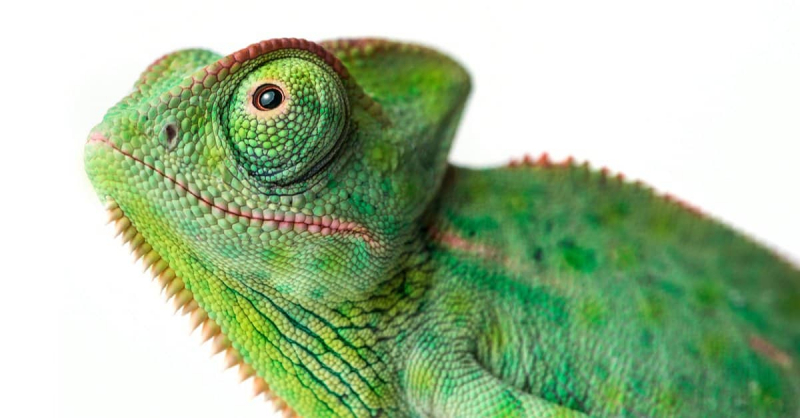
a-z-animals.com 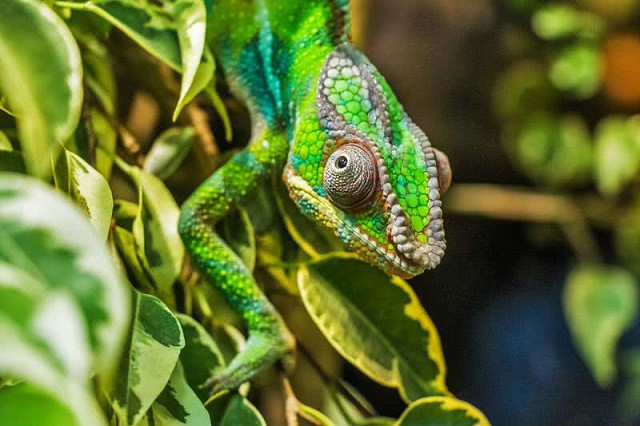
animals.howstuffworks.com -
The eye of a swordfish is about the size of a baseball. When the temperature of the swordfish's eyes is higher, the retina collects flash-like movement and sends nerve impulses faster, according to studies. Swordfish's big eyes are capable of more than only seeing in the dark; they can also hunt like a pro. The swordfish's large eyes are an advantage for a fish that hunts most at the depths of the sea, where there is little or no light.
The special effect of the swordfish’s eyes is not in their incredible vision but the ability for their eyes to heat on their own. It aids in the capture of fast-moving prey. The swordfish has a special organ for producing heat. This maintains the eyeballs at least 10 degrees warmer than the surrounding water's ambient temperature. Tuna and several shark species are examples of water creatures that employ ocular heating. The animal's brain is also heated throughout the process. According to research, bony fish like swordfish utilize this adaptation to avoid severe eye abnormalities caused by sudden and rapid water temperature fluctuations. The neural system of the animal may be harmed as a result of these problems.
Scientific Name: Xiphias Gladius
Eye Diameter : About 9-10 cm
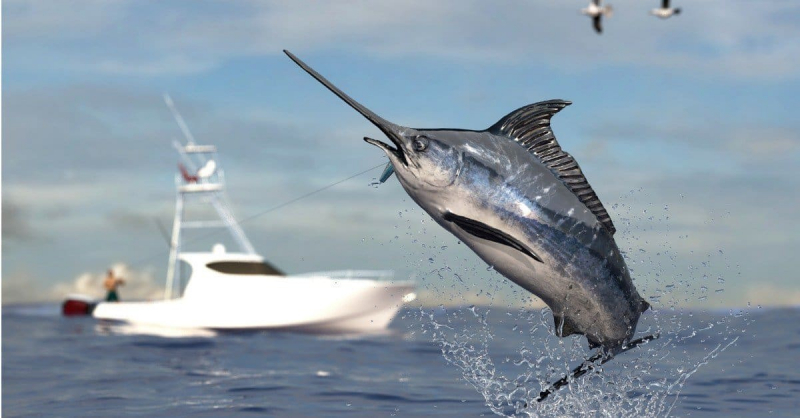
a-z-animals.com 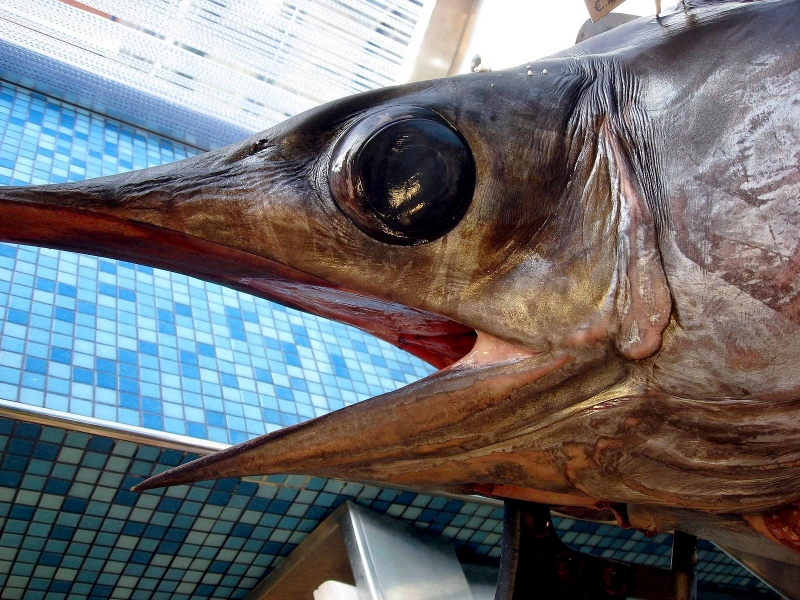
animals.howstuffworks.com -
The cat family is known for having big eyes in general. The Sphynx Cat is proof of this. Large, lemon-shaped eyes. They're practically hairless, and their eyes have a captivating intensity. The Sphynx has no lashes on its eyes. This implies that the felines have no defenses against flying debris. They do, however, create a discharge that is both a moisturizer and a cleaner. They groom themselves, yet there may be remains of the discharge. Owners must then thoroughly remove any residue surrounding the region using lint-free soft washcloths and warm water. No chemicals of any type should be used. You may not only get them in your eyes, but the cat may also lick them off.
This cat, too, has a triangular-shaped head with distinct cheekbones, which emphasizes their big, welcoming eyes even more! Their eyes are also more prominent due to their wide-set placement. As previously said, this type of cat already has huge eyes, this makes it the best animal that has the largest eyes. Eye colors range from blue to green to yellow to gold, and Sphynx cats are one of the few breeds that have heterochromia, an uncommon characteristic. This is when each of their eyes has a different hue, giving them a very distinctive look. One iris will usually be blue, while the other will be green, brown, or yellow.
Scientific Name: Felis Catus
Eye Diameter: About 5-6 cm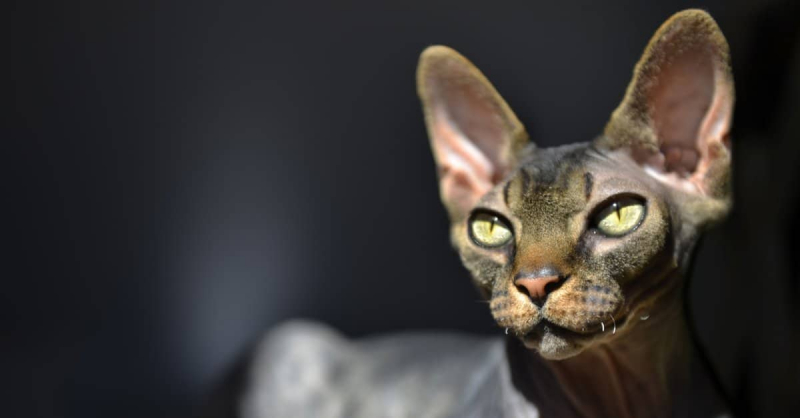
a-z-animals.com 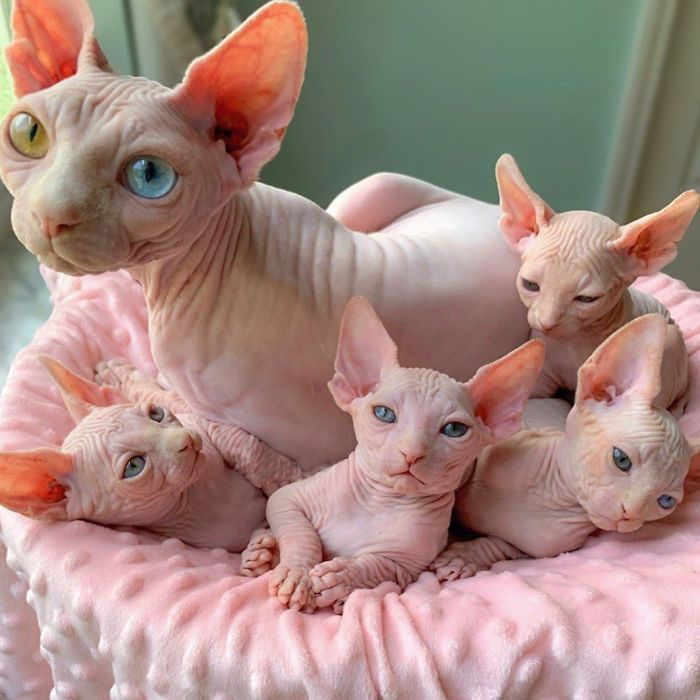
animals.howstuffworks.com -
What a pair of large eyes you have! The eyes of the tree frog protrude from the skull, giving them a bulging, alien-like appearance. The feature serves as a form of defense. The "startle coloring" is what it's termed. When a tree frog closes its eyes, the eyelids, like the rest of its body, merge into the environment. The frog will open its eyes if it is approached by a predator. The predator is temporarily paralyzed by the startling motion of the huge eyes. The move provides the animal with a small window of opportunity to flee.
In addition, its large eyes aid in its swallowing process. The eyes of a tree frog retract into the head once it has grabbed prey in its jaws, forcing the meal down and allowing the frog to swallow. Frogs, like humans, have teeth and a tongue, but their teeth are used to retain the prey in the mouth rather than eat. The tongue of a frog is linked to the front of the mouth rather than the rear, as it is in ours. This is why swallowing without the aid of the eyes is tough for a frog.
Frogs' big eyes are unique in many ways. To begin with, this amphibian spends a significant amount of time in the water. Tree frogs have three eyelids, two transparent eyelids, and one semi-transparent eyelid to swim in garbage-filled water. A pseudo-membrane is the name for this semi-transparent sheet. It may be completely closed to protect the frogs' eyes underwater. The frog's eyes are positioned on top of the sides of the head, giving them a greater view that spans 360 degrees. While underwater, they can even see what's going on outside.
Scientific Name: Hylidae
Eye Diameter: About 3-5 cm
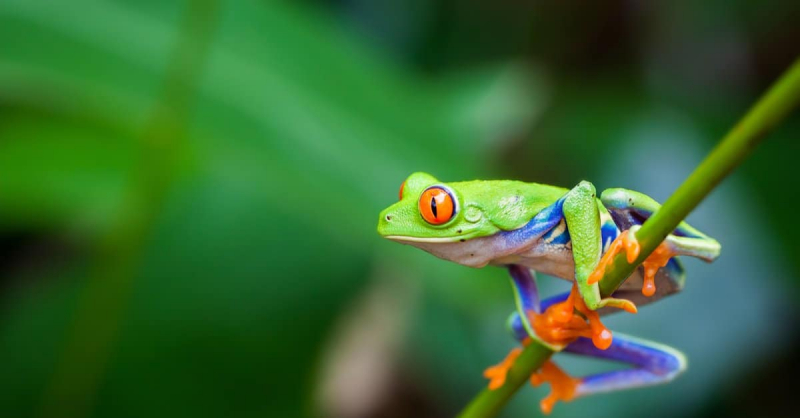
a-z-animals.com 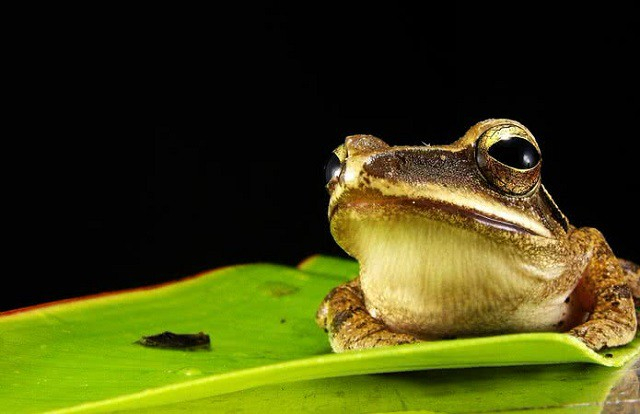
animals.howstuffworks.com -
The Horsfield’s Tarsier is a tiny primate found in Southeast Asian jungles. Their huge eyes on their small bodies, which may measure up to 1.6 cm in diameter, are their most distinctive characteristic. The tarsier has the biggest eyes in proportion to its body size among mammals. Each eye has the same volume as the brain of the animal. The primate is a little hairy creature with slender limbs. However, their quickness and strong senses compensate for their stature.
Tarsiers evolved their wide-eyed gaze to cope with their nocturnal lifestyle. Light enters the eye and travels to the retina, where it is absorbed in part. The rest strikes the tapetum lucidum and is reflected into the retina, giving it another chance to absorb it. The rest exits through the pupil, which is why if your flashlight into a cat's eye, it glows in the dark.
The Tarsier's eyes, like those of owls, are locked in the skull, making them motionless. Tarsier, in turn, can rotate his head 180 degrees left and right to assist them in observing what is going on around them. Because Tarsiers are nocturnal and only come out at night, their huge eyes provide superb night vision. Furthermore, hearing is quite delicate. Tarsier can identify prey in low light thanks to both of these characteristics.
Scientific Name: Cephalopachus Bancanus
Eye Diameter: About 1,6 cm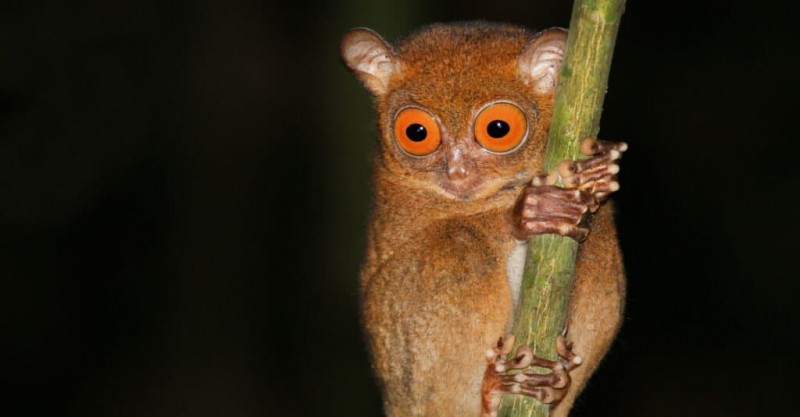
a-z-animals.com 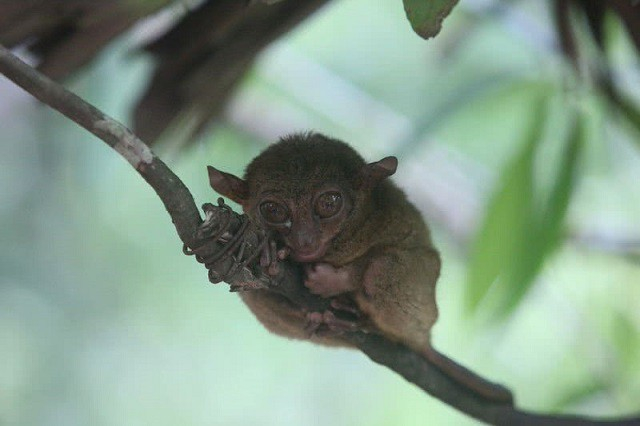
animals.howstuffworks.com













